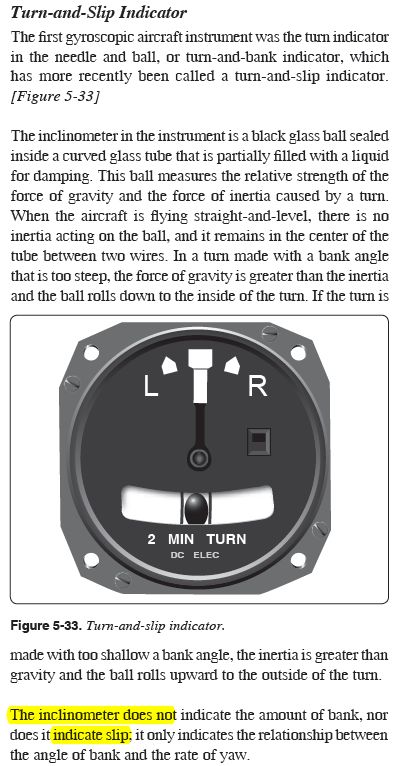eetrojan
Pattern Altitude
Hey all,
I'm confused about this. The excerpt below is from pages 5-20 to 5-21 of the FAA’s Instrument Flying Handbook. I am confused by the highlighted assertion that “[t]he inclinometer … does not indicate slip.”
Is this true? Or, is this whole sentence a confusing mashup of needle operation and ball operation?
I though the inclinometer was just a fancy way of referring to the little ball in the curved tube and, since it’s often called a “slip/skid” indicator, it’s all about indicating slip (and skid).
Am I missing something?
Is there any difference between the inclinometer (ball and tube) in an older Turn-and-Slip Indicator versus the the inclinometer (ball and tube) in a newer Turn Coordinator? I thought they were the same, regardless of the top part of the two instruments.

I'm confused about this. The excerpt below is from pages 5-20 to 5-21 of the FAA’s Instrument Flying Handbook. I am confused by the highlighted assertion that “[t]he inclinometer … does not indicate slip.”
Is this true? Or, is this whole sentence a confusing mashup of needle operation and ball operation?
I though the inclinometer was just a fancy way of referring to the little ball in the curved tube and, since it’s often called a “slip/skid” indicator, it’s all about indicating slip (and skid).
Am I missing something?
Is there any difference between the inclinometer (ball and tube) in an older Turn-and-Slip Indicator versus the the inclinometer (ball and tube) in a newer Turn Coordinator? I thought they were the same, regardless of the top part of the two instruments.


 .
.